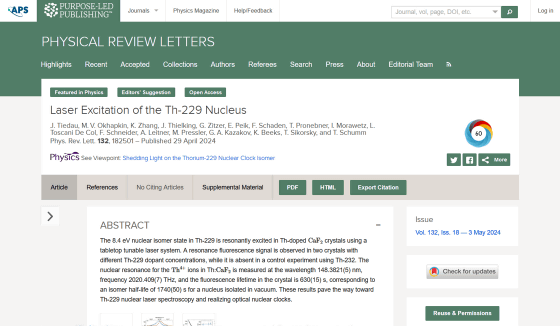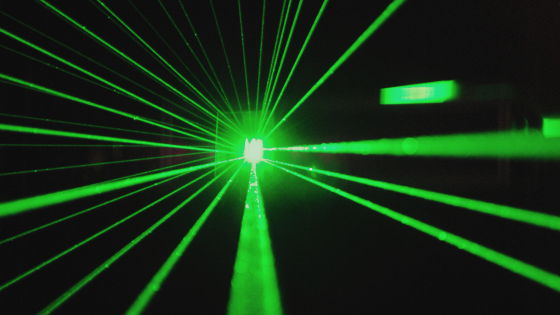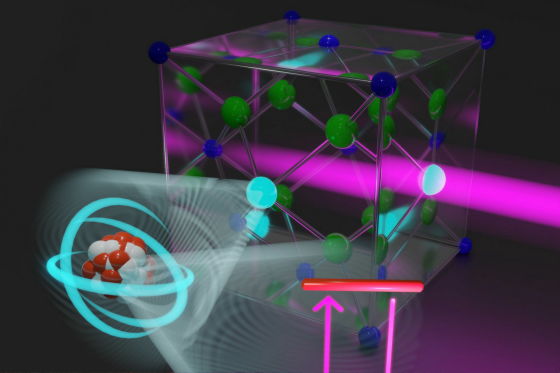Successful laser excitation of thorium nuclei paves the way for revolutionary technologies such as nuclear clocks

A research team from
Phys. Rev. Lett. 132, 182501 (2024) - Laser Excitation of the Th-229 Nucleus
https://journals.aps.org/prl/abstract/10.1103/PhysRevLett.132.182501

Atomic Nucleus Excited with Laser: A Breakthrough after Decades | TU Vienna
https://www.tuwien.at/en/tu-wien/news/news-articles/news/lange-erhoffter-durchbruch-erstmals-atomkern-with-laser-angeregt
Today, it is common to use lasers to manipulate atoms and molecules, and by precisely selecting the wavelength of the laser, it is possible to transition atoms and molecules into different states, which allows the energy of atoms and molecules to be measured with high precision, and this technique is used in atomic clocks and chemical analysis.
However, for many years it was thought that laser excitation could not be applied to the nuclei that make up atoms along with electrons. Professor Torsten Schumm of Vienna University of Technology said, 'Nuclei can also switch into different quantum states, but changing a nucleus from one state to another generally requires at least 1,000 times more energy than an atom or molecule. This is why ordinary nuclei cannot be manipulated with lasers.'
The nucleus of thorium-229, an isotope of thorium, is thought to have the potential to solve this problem. Thorium-229 has two energy states that are very close together, so it was thought that in principle it would be possible to excite the nucleus with a laser.

However, until now there has only been indirect evidence for the idea that thorium-229 can be excited with a laser. The big problem is that in order to excite the nucleus with a laser, the required energy needs to be specified with an accuracy of one millionth of an electron volt.
Identifying the required energy at random is a daunting task, like finding a needle in a haystack.
Finally, Schumm and his team succeeded in pinpointing the exact energy required to excite the thorium-229 nucleus. 'For us, this is a dream come true,' Schumm said. 'We are happy to announce a decisive breakthrough: the first laser excitation of an atomic nucleus.'

Now that we know how to excite thorium-229 with a laser, this technology can be used for a variety of precision measurements. 'From the beginning, building a nuclear clock has been an important long-term goal,' says Schumm. 'Just as a pendulum clock uses the swing of a pendulum as a timer, if we use the light oscillations that excite the thorium transition as a timer, we could build a new type of clock that is much more accurate than the best atomic clocks currently available.'
In addition to time, it may also be possible to precisely analyze the Earth's gravitational field and detect signs of mineral resources and earthquakes, and it may also be possible to apply it to the question of 'Are the constants of nature really constants?' Schum commented, 'Our measurement method is just the beginning. We can't yet predict what results we will get, but it will certainly be very exciting.'
Related Posts:
in Science, Posted by log1h_ik







